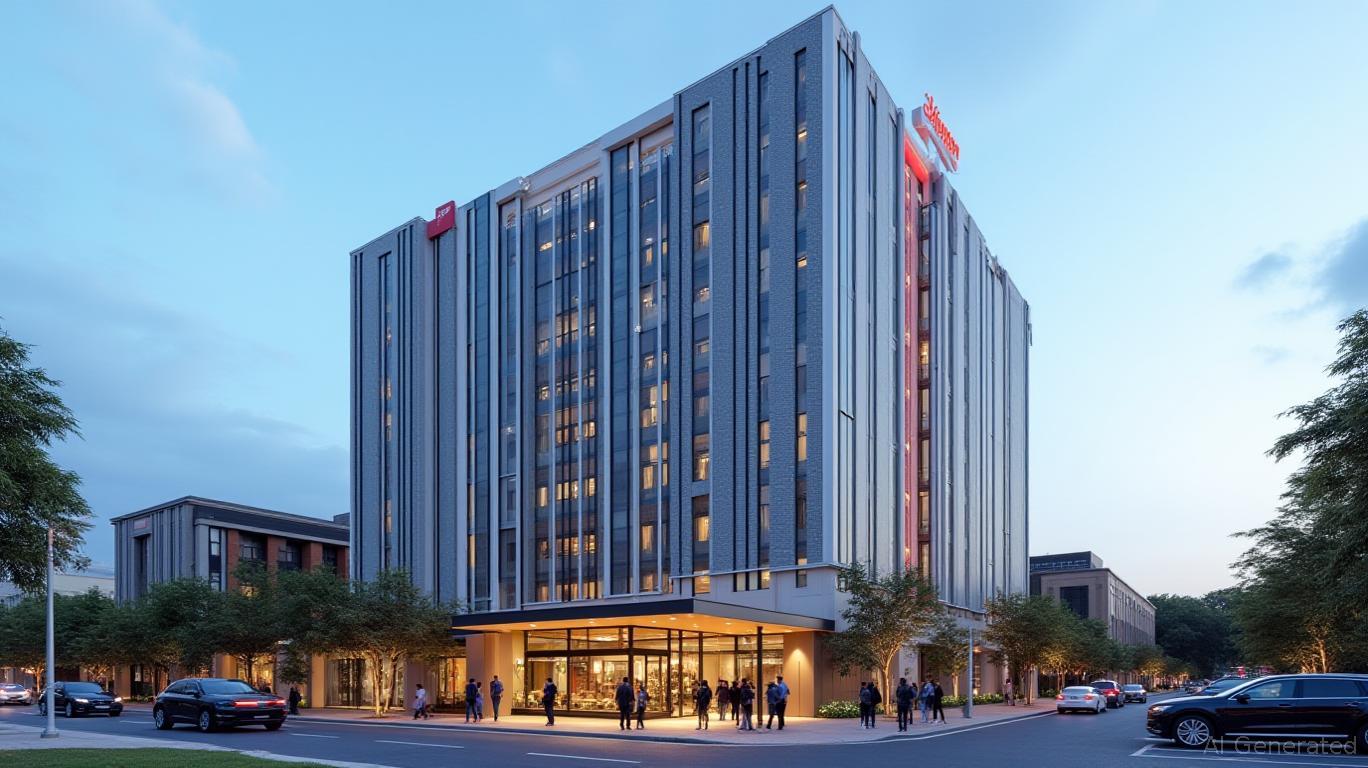Hampton Inn's Global Expansion: Engineered Consistency and Scalable Franchising Drive Resilient Returns
In an era of economic volatility, hospitality brands face the dual challenge of maintaining profitability while adapting to shifting traveler preferences and global market dynamics. Among the sector's standouts, Hampton Inn by
has emerged as a paragon of resilience, leveraging its engineered consistency and scalable franchise model to fuel expansion across high-growth regions. As the brand accelerates into Africa, India, and Southeast Asia, its disciplined approach to standardization and franchisor-franchisee collaboration positions it to deliver steady returns even amid uncertainty.The Power of Standardized Excellence
Hampton Inn's success hinges on its unwavering commitment to operational consistency—a hallmark of its parent company, Hilton. Whether in Sandton, South Africa, or Kokomo, Indiana, every property adheres to a template of clean, functional rooms, free breakfasts, and reliable Wi-Fi. This consistency breeds customer loyalty, a critical asset in an industry where traveler expectations for quality and affordability are rising. The brand's recent debut in Africa exemplifies this strategy: the Hampton by Hilton Sandton Grayston, opened in January 2025, combines Hilton's global standards with local market insights, attracting both business and leisure travelers to a region historically underserved by international hotel brands.

Franchising as a Growth Engine
Franchise-driven scalability is Hampton Inn's secret to rapid global expansion. By partnering with operators like NILE Hospitality—a strategic ally in India—the brand aims to double its presence in the country within five years through 75 new hotels. This model minimizes upfront capital costs for Hilton while ensuring local expertise in markets like India, where the middle class is projected to grow by 60 million people by 2030. Franchisees, in turn, benefit from Hampton's brand equity, centralized reservation systems, and Hilton Honors loyalty integration, which drives occupancy and repeat bookings.
The franchise model's efficiency is underscored by Hilton's 2024 performance: nearly 30% of signings in the Caribbean and Latin America (CALA) region were conversions of existing properties, a strategy that slashes development timelines and costs. In markets like Colombia and Peru, Hampton by Hilton is transforming underutilized hotels into profitable assets, a testament to the brand's adaptability.
Navigating Economic Crosscurrents
Hampton Inn's focus on the focused-service segment—a sweet spot for budget-conscious travelers and business clients—aligns with post-pandemic preferences for value without sacrificing quality. Even as some luxury brands face soft demand, Hampton's mid-tier pricing and functional amenities remain recession-resistant. Its pipeline of 88,500 rooms under construction globally (as of 2024) signals confidence in sustained demand, particularly in emerging markets where Hilton's presence remains sparse.
The brand's recent recognition as the No. 1 Hotel Franchise in Entrepreneur Magazine's 2025 Franchise 500® underscores its appeal to investors. Franchisees benefit from low capital requirements ($2.8–$4.5 million per property) and stable cash flows, with Hampton's average occupancy rate hovering around 72% globally—a robust figure even during off-peak seasons.
Investment Implications
For equity investors, Hilton's shares (HLT) offer exposure to Hampton Inn's expansion, particularly in underserved regions like Africa and Southeast Asia. The stock's 12-month forward P/E ratio of 18.5 (as of June 2025) reflects optimism about its growth trajectory, though investors should monitor macroeconomic risks like interest rate hikes.
For would-be franchisees, Hampton Inn's model presents a low-risk, high-reward entry into hospitality, especially in markets with growing urbanization and tourism infrastructure. Its licensing agreements, such as the 75-hotel pact with NILE Hospitality, provide blueprints for scaling efficiently in high-potential regions.
Conclusion
Hampton Inn's global expansion is not merely about adding rooms—it's about building a resilient ecosystem of standardized quality, franchisor support, and market-savvy localization. As emerging economies mature and global travel rebounds, the brand's disciplined execution could make it a cornerstone of Hilton's 6–7% annual net unit growth target. For investors, this combination of scalability and consistency offers a compelling hedge against economic turbulence. In a world where travelers demand reliability as much as luxury, Hampton Inn's steady march forward is a model worth following.
Sign up for free to continue reading
By continuing, I agree to the
Market Data Terms of Service and Privacy Statement

Comments
No comments yet